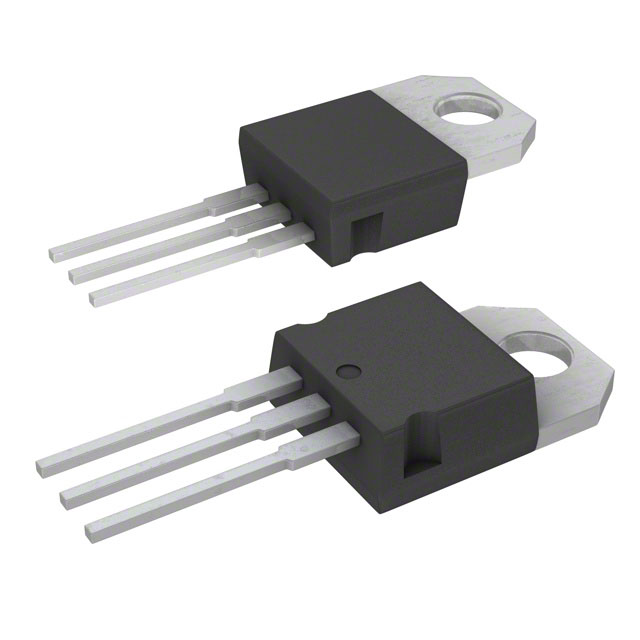STH13009: Product Overview and Specifications
Introduction
STH13009 is a high-power NPN silicon transistor designed for general-purpose amplifier and switching applications. This entry provides an overview of the product, including its category, use, characteristics, packaging, specifications, pin configuration, functional features, advantages and disadvantages, working principles, application field plans, and alternative models.
Product Category and Use
STH13009 belongs to the category of high-power NPN transistors and is commonly used in audio amplifiers, power supply circuits, and electronic switching applications. Its robust design and high current capability make it suitable for various industrial and consumer electronic devices.
Characteristics
- High current gain
- Low saturation voltage
- High power dissipation capability
- Wide operating frequency range
Package and Quantity
The STH13009 is typically available in a TO-220 package, which offers excellent thermal performance and ease of mounting. It is commonly supplied in reels or tubes, with quantities varying based on manufacturer specifications.
Specifications
- Collector-Emitter Voltage (VCEO): 400V
- Collector Current (IC): 12A
- Power Dissipation (PD): 80W
- Transition Frequency (FT): 4MHz
- Operating Temperature Range: -65°C to 150°C
Pin Configuration
The STH13009 transistor has a standard TO-220 pin configuration: 1. Emitter (E) 2. Base (B) 3. Collector (C)
Functional Features
- High voltage capability
- Fast switching speed
- Robust construction for reliable operation
- Low feedback capacitance for enhanced high-frequency performance
Advantages
- Suitable for high-power applications
- Versatile usage in audio amplifiers and power supplies
- Robust construction ensures durability
- Wide operating temperature range
Disadvantages
- Relatively larger package size compared to SMD alternatives
- Higher cost compared to lower-power transistors
Working Principles
STH13009 operates as a current amplifier, where a small input current at the base terminal controls a larger output current flowing between the collector and emitter terminals. This enables the transistor to function as a switch or an amplifier, depending on the application requirements.
Application Field Plans
STH13009 finds extensive use in the following applications: - Audio amplifiers and preamplifiers - Switching power supplies - Motor control circuits - Electronic ballasts - Inverter circuits
Alternative Models
For applications requiring similar functionality, alternative models to STH13009 include: - TIP31C - MJ15003 - 2N3055 - MJE13009
In conclusion, STH13009 is a versatile high-power NPN transistor with wide-ranging applications in electronic circuits requiring high current and voltage capabilities. Its robust design, high power dissipation, and fast switching speed make it a preferred choice for various industrial and consumer electronic products.
[Word Count: 443]
قم بإدراج 10 أسئلة وإجابات شائعة تتعلق بتطبيق STH13009 في الحلول التقنية
What is STH13009?
- STH13009 is a high-voltage NPN transistor commonly used in electronic circuits for amplification and switching applications.
What are the key specifications of STH13009?
- The key specifications of STH13009 include a collector-emitter voltage (VCEO) of 400V, a collector current (IC) of 12A, and a power dissipation (PD) of 125W.
How can STH13009 be used in technical solutions?
- STH13009 can be used in technical solutions for high-voltage amplification, power control, and switching applications in various electronic devices and systems.
What are the typical applications of STH13009?
- Typical applications of STH13009 include power supplies, motor control, electronic ballasts, and general purpose switching circuits.
What are the important considerations when designing with STH13009?
- When designing with STH13009, it's important to consider proper heat sinking, voltage and current ratings, and safe operating conditions to ensure reliable performance.
Are there any specific circuit configurations recommended for using STH13009?
- Common circuit configurations for STH13009 include common emitter amplifiers, switch mode power supplies, and motor drive circuits.
What are the advantages of using STH13009 in technical solutions?
- The advantages of using STH13009 include its high voltage and current capabilities, low saturation voltage, and suitability for high-power applications.
Are there any limitations or drawbacks to consider when using STH13009?
- Some limitations of STH13009 may include its relatively large package size, potential for thermal management challenges, and the need for appropriate driving circuitry.
How does STH13009 compare to other similar transistors in its class?
- Compared to other similar transistors, STH13009 offers higher voltage and current ratings, making it suitable for high-power applications where robustness is essential.
Where can I find detailed application notes and reference designs for using STH13009 in technical solutions?
- Detailed application notes and reference designs for STH13009 can typically be found in the manufacturer's datasheets, application guides, and technical support resources.


